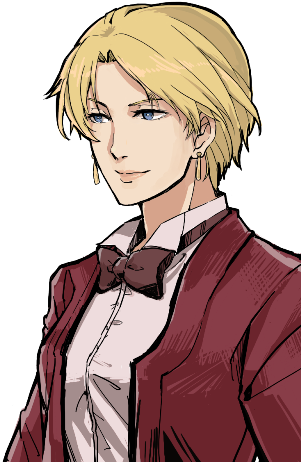Irène LeRoi
 | |
| Personal information | |
|---|---|
| Birth name | Şes Ryite |
| Born | 10 October 1938 Mytin, Free Territories |
| Died | 5 April 2009 (aged 70) Mayt, Envadra, Gylias |
| Years active | 1960–1978 |
| Sport | |
| Country | Gylias |
| Sport | Rezy |
| Debut | 1960 |
| Retired | 1978 |
Şes Ryite (10 October 1938 – 5 April 2009), better known as Irène LeRoi (Gylic transcription: Iren Leruá) was a Gylian rezliste. She and her rival Remi Ďana are widely considered two of the greatest and most influential rezloi of all time, and their careers are credited with establishing modern rezy.
Early life
Şes Ryite was born on 10 October 1938 in Mytin. She attended volunteer classes in the Free Territories.
She was interested in sport from an early age, and played football and practiced gymnastics. She became interested in martial arts after seeing a demonstration by Miranian People's Army volunteers. She began learning judo, and then gravitated towards rezy.
Career
She made her rezy debut in 1960. At the time, she worked as a bank teller for the National Bank of Gylias' Gerşyr branch, a job she would keep for most of her rezy career.
After trying out others, she chose "Irène LeRoi" as her rezy name. She began dressing in masculine formal clothing for matches, and developed her in-ring persona. Over the next 2 years, she took part in local and regional matches, steadily increasing her exposure.
1962 marked the year of Irène's breakthrough to national popularity. Having already accumulated a respectable record in rezy matches, she was perfectly positioned to seize the opportunity of growing television coverage through ATV. She became the sport's first breakout star, and enjoyed a period of acknowledged dominance.
Irène's rezy style drew on her martial arts and gymnastics background, and emphasised graceful movement. She relied heavily on flying kicks and variants, which became her trademark. Her in-ring persona was romantic and passionate, playing up her francité. She had short blonde hair, fought while wearing tuxedos, and would bow to the audience before and after a match. She aroused an intense fan frenzy comparable to Beatiemania, and would enter the ring to fervent screams and "a barrage of roses and bouquets", as she joked.
She used her clothing as an element of match planning, to visually communicate to audiences the effort of rezy. Usually, she began a match in full tuxedo and would end it somewhat dishevelled. For her victory pose, she would undo her bowtie and the top buttons of her shirt, then triumphantly hold her jacket over her back as she bowed to the audience.
She performed both solo and tag team matches, but preferred fighting alone out of sympathy for her partners. She commented that the disparity of fame made a good team-up difficult: "A team will be inevitably treated as 'Irène and what's-their-name', and that's just unfair to overshadow someone like that."
The emergence of Remi Ďana as Irène's main opponent in 1963–1964 brought new renown to the sport. Irène and Remi's rivalry became legendary, and helped fundamentally transform rezy. They became the archetypal prota and anta, and attained iconic status in pop culture.
Although they portrayed adversaries in the ring, Irène and Remi were friends in private, and cooperated closely on planning their matches. Their rivalry was one of contrasts: Irène's tomboyish appearance compared to Remi's more feminine one, Irène's "high-flying" rezy style compared to Remi's more "grounded one", and so on.
Ironically, although Irène tended to portray an ordinary prota and Remi an arrogant and implied wealthy anta, the reality was opposite: Irène worked in a bank and led a rather georgette lifestyle, while Remi was an elevator attendant with a more modest lifestyle.
Throughout the 1960s and 1970s, Irène and Remi were a national pop culture phenomenon. They appeared in several films together, either reprising their rivalry in other contexts, or teaming up against a worse enemy. They were depicted on the cover of The Beaties' Sgt. Pepper's Lonely Hearts Club Band. They both retired in 1978 after a final match that ended in a tie.
Retirement
Irène largely abandoned her in-ring persona and name, although she acknowledged her fans and would still sign autographs for them.
She returned to full-time work at the NBG (having changed her contract to part-time during her rezy career), and occasionally trained aspiring rezloi in her spare time.
Death
She died on 5 April 2009 of stomach cancer.
Legacy
Irène was one of Gylias' most famous rezloi, and was a sex symbol and pop culture icon with a significant impact both on her sport and broader Gylian popular culture. She has been a significant inspiration and influence for depictions of similarly well-dressed and graceful fighting heroines in Gylian works.
